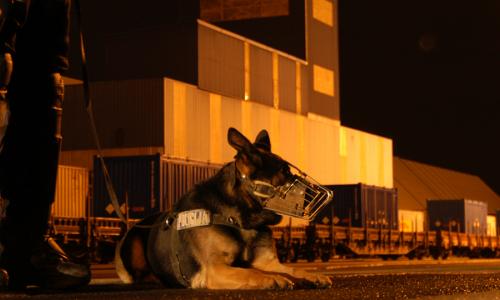Of all the terrorist threats facing the United States and the world, perhaps the gravest is the possibility of terrorists constructing or obtaining a nuclear weapon and detonating it in a city. If a terrorist group exploded just one nuclear weapon, hundreds of thousands of people could die. Because there is no effective protection against a nuclear blast, one viable solution is to prevent terrorists from obtaining nuclear bomb materials or weapons in the first place.
The United States and other countries are paying insufficient attention to this problem and, in some cases, pursuing policies that increase the risk of terrorists acquiring nuclear weapons.
A nuclear weapon requires either highly enriched uranium (HEU) or plutonium. Fortunately, these materials are not found in nature and are difficult to produce. This means there are only two plausible ways for terrorists to acquire nuclear weapons. First, they could steal an intact nuclear weapon from existing arsenals or purchase a stolen weapon. More likely, terrorists could acquire the material needed to build a nuclear weapon and the expertise to construct a workable bomb from this material.
Because only a relatively small amount of HEU or plutonium is needed to build a bomb, terrorists could feasibly steal enough material to build one or more nuclear weapons. A crude nuclear weapon would use 40-50 kilograms (88-110 pounds) of HEU; a more sophisticated design would require 12 kilograms (26 pounds) of HEU or 4 kilograms (9 pounds) of plutonium. The theft of HEU would be especially worrisome, because it is relatively straightforward to make a bomb using this material.
Unfortunately, there are numerous potential sources of nuclear weapons and weapons materials worldwide and several types of shortcomings in current security and accounting measures, some of which we list below.
- Several countries possess large stockpiles of civil plutonium for use in nuclear power reactors. Civil stockpiles stored in Belgium, France, Germany, India, Japan, Russia, and the United Kingdom comprise more than 230 metric tons of plutonium. Despite these enormous stockpiles, France, India, Japan, Russia, and the UK continue reprocessing in order to produce more civil plutonium. While civil plutonium is not "weapon-grade," it can still be used to make nuclear weapons.
- The United States has a relatively small amount of civil plutonium compared with these other countries because it decided in the 1970s to suspend the separation of plutonium from civil spent nuclear fuel.
- Russia and the United States possess enormous stockpiles of military plutonium from dismantled nuclear weapons. Russia's stockpile comprises some 150 metric tons and the U.S. stockpile comprises 100 metric tons. Each country has pledged to dispose of 34 metric tons, but neither effort has gotten off the ground. Moreover, the method they have chosen—turning the plutonium into fuel for nuclear reactors—could actually increase the risk of plutonium theft unless stringent security measures are applied.
- HEU is used to fuel well over 100 research reactors worldwide in dozens of countries. Many of these facilities are in academic or industrial settings with inadequate security—making them even more attractive targets for terrorists seeking nuclear weapons materials.
- In 2005, the U.S. Congress eliminated long-standing restrictions on exporting HEU to other countries for the purpose of making medical isotopes.
- Russia and the United States possess enormous stockpiles of military HEU. Russia has more than 1,000 metric tons, half of which it now considers "excess" to its security needs and is being converted to low-enriched uranium that cannot be used for weapons. The United States has more than 700 metric tons, of which it has declared 174 metric tons as excess. The HEU conversion and disposal programs in both countries are proceeding slowly, and even after their completion, each country will be left with more than 500 metric tons of HEU—enough for 10,000 simple nuclear weapons.
- Thousands of so-called tactical nuclear weapons—many of which are quite small and do not have electronic locks to prevent their unauthorized use—are stored in Russia, some in poorly secured locations. In addition, the United States maintains some 150 tactical nuclear weapons in Europe as part of NATO forces, and stores roughly 1,000 such weapons within its own borders.
- Tons of Russian nuclear materials are stored under inadequate security. During the Soviet era, the state limited access to cities in which these materials were stored, but did not keep strict account of the material or worry about theft by citizens who did have access. Since the collapse of the Soviet Union, that is no longer a viable strategy. Security upgrades (such as fences and controlled access) have been made to many sites, but not all.
- Even in countries such as France, Japan, and the United States, security measures for protecting weapon-usable materials from theft are probably inadequate to protect against contemporary terrorist threats.
The UCS Global Security Program is working to address these problems through analysis; education of Congress, the media, and the public; legal interventions; and meetings with U.S. policy makers to encourage the adoption of specific policies and programs.




